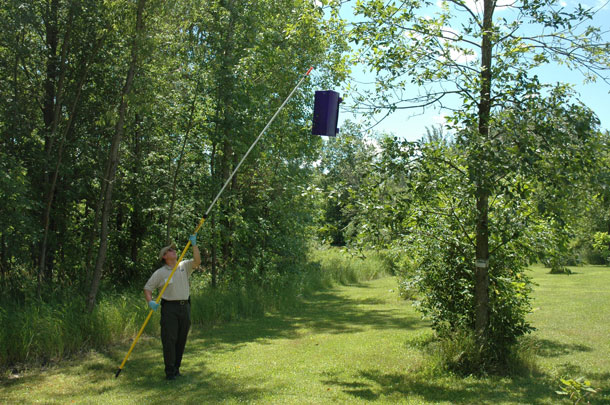
Facts
No question, Agrilus planipennis is an ever-growing issue in our society. This website has taken a close look into the life of an Emerald Ash Borer and discussed its effect on Ash species, but how does this beetle really affect us as humans? The outcomes are both qualitative and quantitative but aren’t discriminating; we all feel the effects of this malicious beetle. Here are a few general facts and questions about EAB.
What does it cost?
|
With the presence of EAB, the cost of owning an ash tree has sufficiently risen. In order to keep an Ash standing, some sort of preventative measure must be take and to date the best method is insecticides, which would need to be continually applied. If it is already too late for prevention, the ash tree will need to be removed which in itself is a costly procedure, not to mention the impairment it has on property value. Finally, to recoup losses, a new tree must be replanted. All of these scenarios have been taken into account by the University of Nevada-Las Vegas Economics Department which estimated the aggregate cost of treatment, removal, and replacement over the next 10 years to be approximately 10.7 billion dollars. With numbers like that it would be safe to say EAB works on Wall Street. |
What does an infected tree look like?
What preventative procedures are there?
With EAB infestation comes the need to control for further migration. Some natural predators of EAB have been researched in regard for biological and microbial control; however their complete ecological impact is not yet completely understood. Currently, the only preventative measure is injecting or spreading insecticide around Ash trees. Unfortunately, this is only a temporary solution and still isn’t 100% effective. In the worst case scenario, if a tree is infected the best thing to do would be to dispose of the tree and have it removed to prevent the further propagation of EAB. Both of these solutions aren’t great but they are all that is available. Further information on insecticide application or infected tree removal can be found at emeraldashborer.info.
What are those purple boxes in trees?


